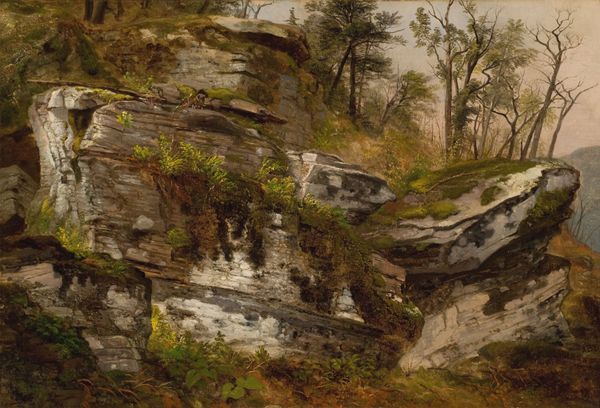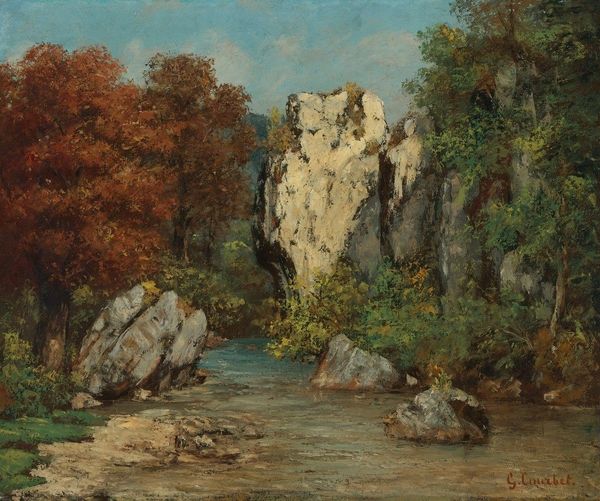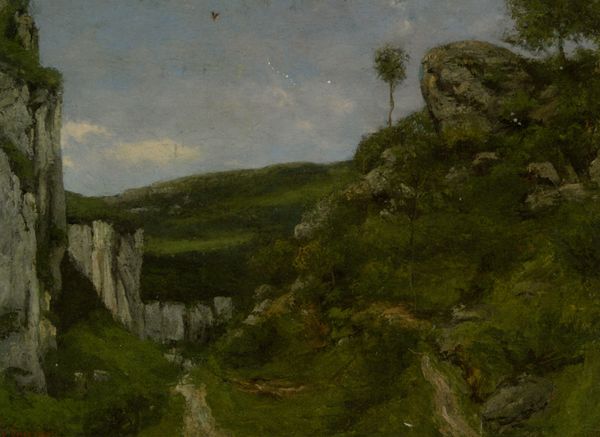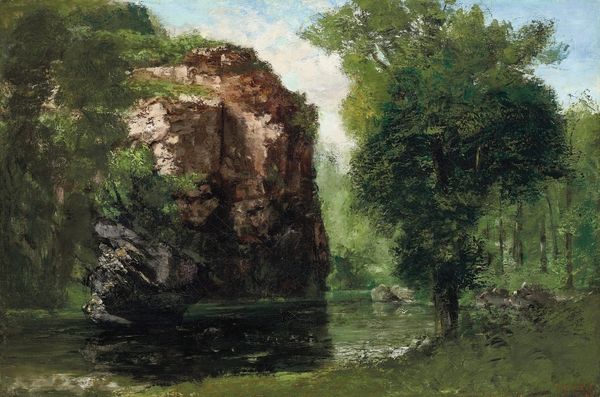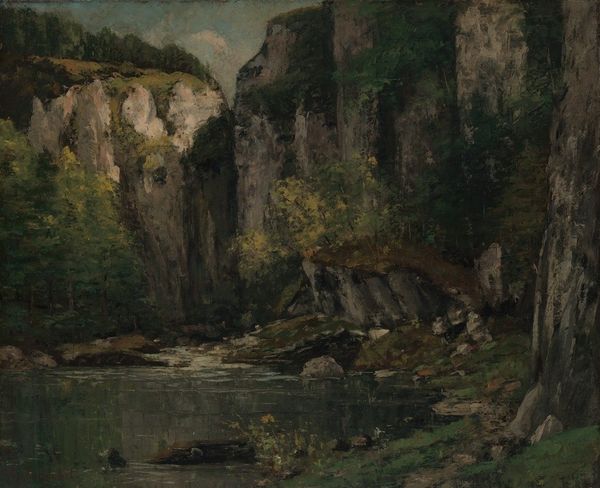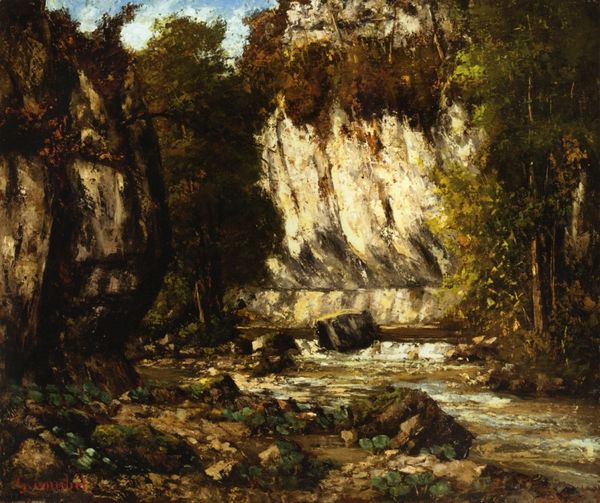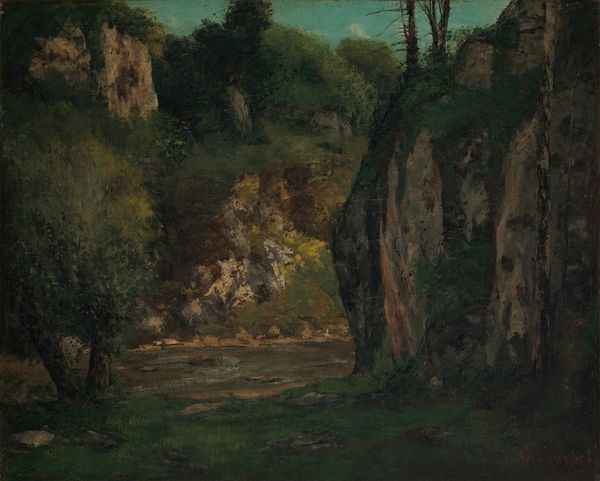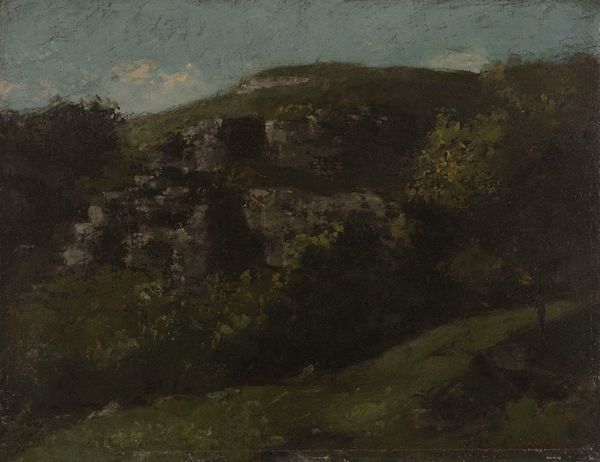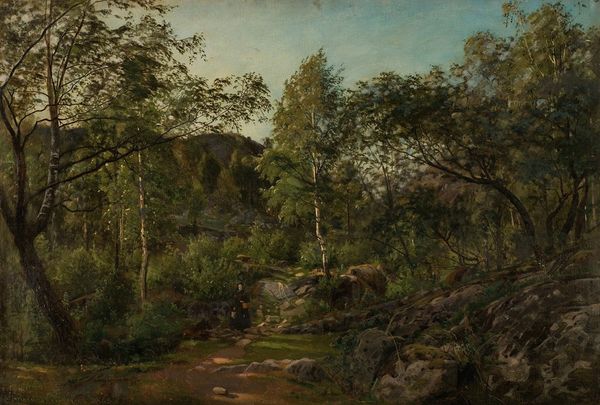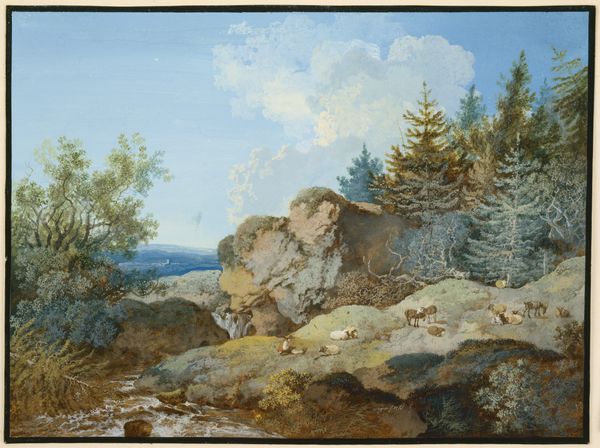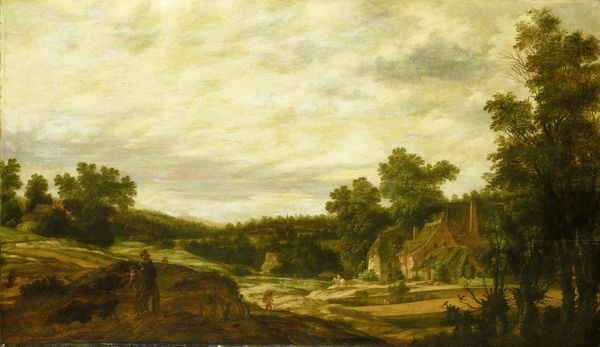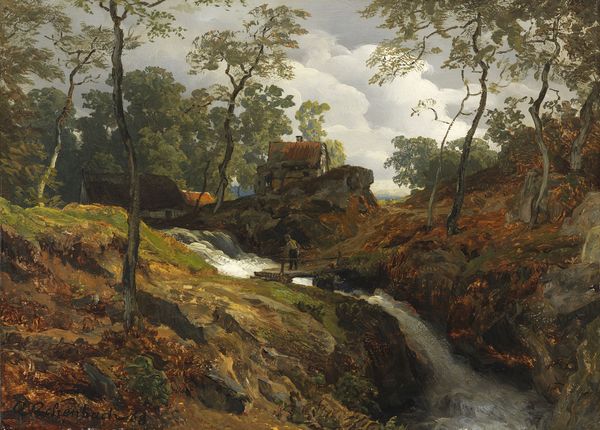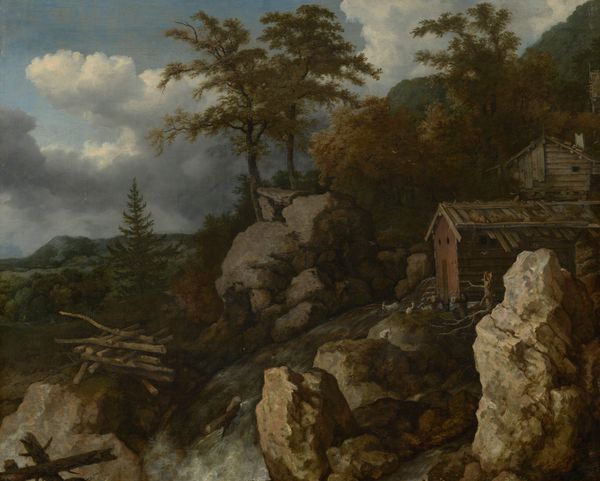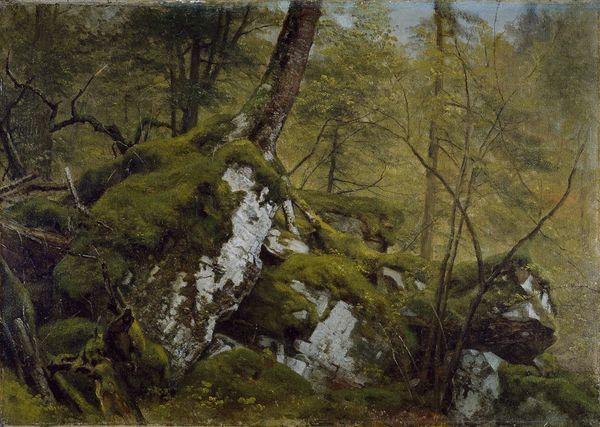
painting, plein-air, oil-paint
#
painting
#
plein-air
#
oil-paint
#
landscape
#
waterfall
#
oil painting
#
rock
#
realism
Dimensions: height 61 cm, width 73 cm, height 78.5 cm, width 91.5 cm, thickness 8.5 cm
Copyright: Rijks Museum: Open Domain
Gustave Courbet captured this landscape with rocky cliffs and a waterfall on canvas using oil paints. Immediately striking is the painting’s composition, a balance between the rugged geological forms and the soft, enveloping foliage. The textural contrast here invites us to consider the painting not just as a representation but as an object in itself, with Courbet's brushstrokes building up layers of meaning. Courbet, in his commitment to Realism, was interested in presenting nature without idealization, focusing on the tangible and immediate. This is evident in the way he renders the rocks, their rough surfaces and irregular shapes challenging traditional landscape aesthetics. The subdued palette, dominated by earthy tones and greys, further reinforces this emphasis on the unvarnished truth of the natural world. The waterfall, a focal point, is treated with the same attention to material presence as the rocks, its cascading water rendered with thick, palpable strokes. Here, Courbet not only captures the scene but also embodies a shift towards modern art’s self-awareness, reminding us that we are viewing paint on canvas, an artistic choice, and a conscious engagement with the act of representation itself.
Comments
rijksmuseum about 2 years ago
⋮
At the time of the Hague School, the French painter Courbet enjoyed a certain notoriety. He styled himself as a rebel and refused to align himself with any spe-cific style. Instead he began a one-man movement: ‘Realism’. He tried to render the ruggedness of nature by applying the paint to the canvas spontaneously, often with a palette knife. He painted these cliffs in the Jura Mountains in the vicinity of his native Ornans.
Join the conversation
Join millions of artists and users on Artera today and experience the ultimate creative platform.
